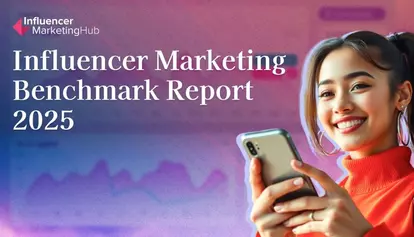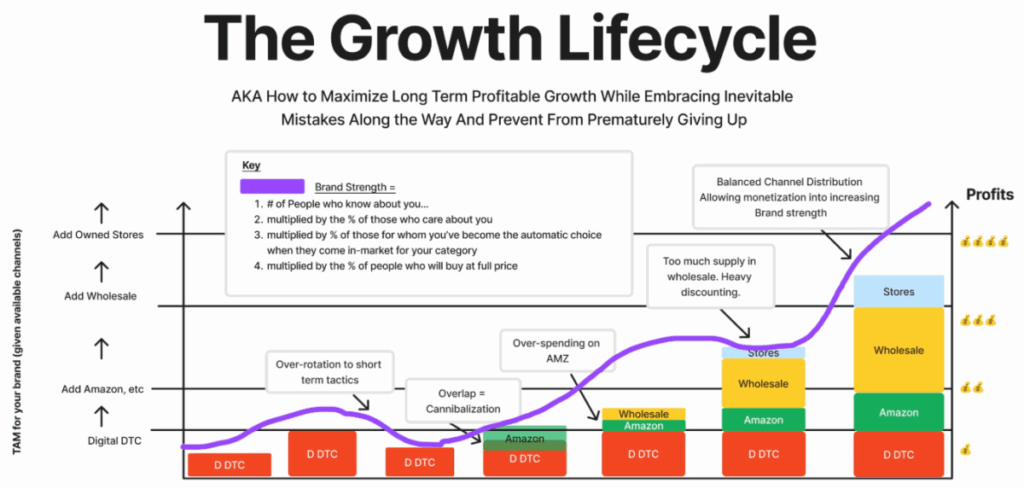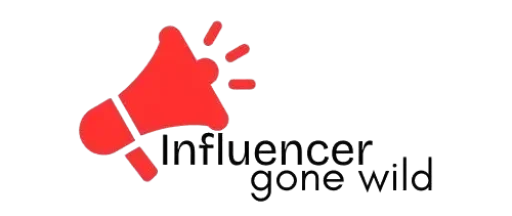Influencer Marketing Benchmark Report 2025

For marketers, consultants, and creators, the era of passive adaptation has ended.
The influencer marketing ecosystem stands at an inflection point, reshaped by unprecedented technological advancements, shifting consumer behaviors, and increasing demands for accountability. Influencer Marketing Report
As we enter 2025, the question is no longer whether influencer marketing works but how to unlock its next evolution. In 2024, influencer marketing propelled social media to become the world’s largest advertising channel, surpassing paid search with a staggering $247.3B, reaching $266.92B by end of Influencer Marketing Report 2025 in global spend, cementing its role as the epicenter of consumer influence and engagement.
Political and economic uncertainties, particularly surrounding TikTok, have significantly disrupted the influencer marketing space. Following its potential US ban in 2025, marketers’ investment intentions for TikTok in their influencer campaigns dropped by 17.2%, reflecting a cautious reassessment of platform reliability. This shift underscores the critical need for brands to diversify their strategies, ensuring resilience in the face of regulatory and geopolitical turbulence.Influencer Marketing Report, the potential TikTok ban serves as a stark reminder of the risks associated with overdependence on any single platform.
This year’s Influencer Marketing Report 2025 builds on this critical juncture, presenting the industry’s most comprehensive insights and strategies for navigating the road ahead.
Key Areas Covered in the Report
To provide a holistic analysis of the Influencer Marketing Reportindustry in 2025, we have focused on five critical areas that encompass the industry’s macro trends, technological innovations, and operational nuances:
- Market Dynamics and Growth Trajectory of Influencer Marketing
- Sentiment Towards Influencer Marketing in 2025
- AI – The Catalyst of Influencer Marketing’s Evolution
- Influencer Marketing Distribution Channels and Influencer Tiers
- Expert Predictions on the Future of Influencer Marketing
This is not a moment for incremental change. It is a call to reimagine influencer marketing for an era defined by technological disruption and consumer expectation. Success in Influencer Marketing Report 2025 will depend on your ability to master this balance, blending innovation with human connection to drive enduring impact. Influencer Marketing Report, Many of us are right now in a race to uncover the new road ahead, and this is exactly what we will be doing in this report.
Notable Highlights – Influencer Marketing Benchmark
Report 2025:
- Influencer marketing projected to reach $32.55 billion in global market size by 2025
- Over 80% of marketers affirm influencer marketing as a highly effective strategy
- Nano-influencers accounted for 75.9% of Instagram’s influencer base in 2024
- AI integration improves campaign outcomes for 66.4% of marketers
- TikTok experiences a 17.2% drop in marketers’ investment intentions following its US ban in 2025
- 63.8% of brands confirm plans to partner with influencer Marketing Report in 2025
- Live streaming emerges as the leading content strategy, favored by 52.4%
- Experts emphasize 47% focus on long-term influencer partnerships
- Brazil secures 15.8% share as the global leader in Instagram influencers
- 73% of marketers believe influencer marketing can be largely automated by AI
Strategic Foundation for Comprehensive Industry Insights
Through a dual-pronged research framework, encompassing quantitative analysis of 315 influencer marketers and qualitative predictions from 100+ thought leaders, this report delivers an unparalleled synthesis of market sentiment, investment trends, and actionable recommendations in Influencer Marketing Report.
This hybrid approach addresses a key challenge in influencer marketing: the divergence between operational realities faced by marketers and the forward-looking innovations proposed by executives. Quantitative findings ensure a grounded understanding of market benchmarks, while Influencer Marketing Report qualitative insights provide foresight into emerging trends such as AI’s role in hyper-personalization and the rising importance of community-building.
Quantitative Analysis: Data from 315 marketers reveals how budgets are allocated, AI technologies are adopted, and ROI is measured. Key benchmarks and trends provide a comprehensive view of the market’s trajectory.
Qualitative Insights: In-depth interviews with 100+ industry leaders uncover expert predictions, identify challenges, and provide strategies for leveraging technology, engaging influencers, and navigating macroeconomic pressures.
Market Dynamics and Growth Trajectory of Influencer Marketing
Influencer Marketing estimated market size reaching $32.55 billion in 2025
Influencer marketing continues to exhibit exponential growth, with the industry’s estimated market size reaching $32.55 billion in 2025, compared to $24 billion in 2024 and a modest $1.4 billion in 2014. Influencer Marketing Report, This represents a remarkable Compound Annual Growth Rate (CAGR) of 33.11%, showcasing the sector’s sustained momentum and rapid expansion over the past decade.

Annual Growth Trends
Between 2024 and 2025, the global influencer marketing industry is projected to grow by an impressive 35.63%, significantly outpacing the average growth rates of traditional advertising channels. Influencer Marketing Report,this year the surge is fueled by increasing investments in influencer-led campaigns, advanced AI-powered tools for campaign optimization, and the growing integration of social commerce platforms.
Historical Growth Context
- 2014–2019: The industry scaled from $1.4 billion to $6.5 billion, largely driven by the rise of social media platforms and the early adoption of influencer marketing strategies.
- 2020–2025: The pandemic-induced shift to digital accelerated growth further, with market size ballooning from $9.7 billion in 2020 to $32.55 billion in 2025, cementing influencer marketing as a cornerstone of modern advertising.
Influencer Marketing Report, this trajectory not only highlights the growing relevance of influencer marketing but also its ability to adapt and thrive amidst evolving consumer behaviors and technological advancements.
Influencer Marketing Report, The sector’s rapid expansion underscores its potential to rival, if not surpass, other major digital marketing channels in both scale and strategic importance.
Since 2014, average daily time spent on social media has surged by nearly 40%, reaching 143 minutes per day. As platforms evolve into hubs for entertainment, shopping, and connection, social media has become the undisputed battleground for consumer attention.
Social media became the world’s largest advertising channel
In 2024, social media became the world’s largest advertising channel, surpassing paid search, with a staggering $247.3 billion in global ad spend. This is expected to grow to $266.92 billion in 2025, driven by increasing investments in influencer collaborations, short-form videos, and live shopping experiences Influencer Marketing Report
6,939 Companies Now Serve the Booming Influencer Marketing Industry
The influencer marketing ecosystem continues to expand at a rapid pace, with 6939 influencer marketing-focused service providers and platforms recorded in 2025, a significant increase from just 1,120 in 2019.
Influencer Marketing Report ,This explosive growth highlights the increasing reliance on these companies to simplify complex workflows for both brands and influencers. While organic influencer marketing can be slow and resource-intensive, these companies have become essential in bridging the gap between brands and the creator economy.

Jasmine Enberg, VP & Principal Analyst of Social Media & Creator Economy, explains that the landscape is both consolidating and expanding in response to the creator economy’s evolution. She predicts three transformative trends for 2025:
1. Consolidation Among Agencies:
Brands are consolidating their influencer marketing efforts with fewer agencies.
Influencer Marketing Report, Large holding companies, such as Publicis Groupe with their acquisition of Influential, are acquiring influencer-led agencies to strengthen their expertise. Influencer marketing is no longer optional but essential, pushing this consolidation trend further.
2. Niche Agencies Thriving:
Specialized agencies with unique, creative offerings remain in demand. Firms like Creator Authority, Influence by Verbatim, and ARCH are examples of how niche specialization ensures relevance in an otherwise saturated market. On the other hand, agencies that rely solely on software solutions are struggling to stand out, as brands increasingly demand a hybrid approach that combines human creativity and technological precision.
3. The Rise of Talent Management:
With creators building large-scale businesses, agencies are investing heavily in talent management. This trend mirrors acquisitions such as Whalar’s purchase of Sixteenth.Influencer Marketing Report, Traditional Hollywood agencies are also increasingly focusing on digital talent, marking a shift in how creators are supported and represented.
These trends, supported by data insights from HypeAuditor, illustrate the dynamism of the influencer marketing industry, where growth is driven not just by quantity but by the strategic evolution of agency models to meet new demands.
Regional Insights
The United States leads the global landscape for influencer marketing with 22.7% of all sponsored posts made by influencers in 2024, totaling an impressive 18.9 million posts. Brazil ranks second, contributing 14.5% of sponsored posts, followed by India with 6.7%
| Countries | Count of Posts | Percentage |
| United States | 18,903,860 | 22.7% |
| Brazil | 12,034,485 | 14.5% |
| India | 5,576,769 | 6.7% |
| Indonesia | 3,104,724 | 3.7% |
| United Kingdom | 2,818,065 | 3.4% |
| Japan | 2,215,092 | 2.7% |
| Spain | 1,947,962 | 2.3% |
| Germany | 1,717,057 | 2.1% |
| Italy | 1,673,182 | 2.0% |
| France | 1,659,377 | 2.0% |
Distribution of Instagram Influencers
Interestingly, Brazil leads in the number of Instagram influencers, with 3.83 million influencers accounting for 15.8% of the global share, followed closely by the United States at 3.78 million influencers (15.6%). India secures third place, with 1.99 million influencers (8.2%).
| Country | Number of Influencers | Percentage |
| Brazil | 3,832,203 | 15.8% |
| United States | 3,779,041 | 15.6% |
| India | 1,995,353 | 8.2% |
| Iran | 1,209,171 | 5.0% |
| Indonesia | 863,517 | 3.6% |
| Turkey | 755,874 | 3.1% |
| United Kingdom | 720,543 | 3.0% |
| Italy | 653,392 | 2.7% |
| Germany | 520,173 | 2.1% |
| France | 513,253 | 2.1% |
Emerging Regional Trends
- Brazil’s Dominance: Brazil has surpassed the United States in the number of Instagram influencers, reflecting a dynamic influencer economy powered by its social commerce boom and mobile-first audience.
- India’s Ascent: India’s rapid growth in influencer adoption aligns with its expanding digital economy and its strong base of Gen Z and millennial audiences, making it a vital market for global brands.
- MENA and LATAM: Emerging regions like MENA and LATAM are witnessing accelerated growth in influencer marketing. These markets are experiencing double-digit growth in influencer marketing budgets as brands increasingly target local influencers to drive regional relevance and engagement.
These regional dynamics underline the growing global influence of the influencer marketing industry. While the United States retains its leadership in sponsored posts, Brazil’s overtaking of the U.S. in influencer numbers showcases shifting trends in adoption. Emerging markets like India, MENA, and LATAM present exciting opportunities for brands aiming to capitalize on localized, culturally relevant influencer strategies in Influencer Marketing Report.
Increasing Focus on Brand Strength and Tech-Driven Efficiency Could Propel Influencer Marketing Further in 2025
Every brand’s growth lifecycle is unique, yet predictably similar.Influencer Marketing Report, the rapid growth of influencer marketing, projected to reach $32.55 billion by 2025, is accompanied by a deeper focus on brand strength. Much like the “Growth Lifecycle” of DTC brands, the influencer marketing ecosystem is now at a critical inflection point where building sustainable brand strength matters as much as channel expansion.

In Influencer Marketing Report 2025, technology is becoming a crucial enabler, allowing for more efficient allocation of marketing spend. From AI-driven analytics to the rise of social commerce, brands now have unprecedented tools to optimize influencer campaigns and measure results with precision. These advancements, combined with regional expansions and the integration of sustainability into marketing strategies, are accelerating growth opportunities for both brands and influencers.
The influencer marketing industry, now supported by over 6,939 specialized agencies, is showing signs of maturity. Consolidation among agencies, the rise of niche players, and a stronger emphasis on talent management signal a shift toward more strategic and deliberate growth.
Sentiment Towards Influencer Marketing in 2025
As we enter 2025, influencer marketing continues to be regarded as a cornerstone of digital strategy, but industry sentiment reveals a shift toward cautious optimism. While 75.6% of respondents plan to dedicate a budget to influencer marketing in 2025, this marks a 10.2% decrease from the prior year, reflecting a recalibration driven by economic uncertainties and heightened scrutiny on ROI.
Influencer Marketing Hubs community Member, Laurent Verrier, reinforces this sentiment, highlighting how influencer marketing is transitioning from tactical, campaign-based activities to a strategic discipline commanding a larger share of overall marketing budgets. However, brands are increasingly deliberate, focusing on investments that demonstrate clear value and scalability.
Budget Allocation Trends
The data highlights a measured approach to influencer marketing budgets:
- 2023: 82% planned a dedicated budget.
- 2024: Increased to 85.8% (+3.8% YoY).
- 2025: Declined to 75.6% (-10.2% YoY).
This downward trend underscores macroeconomic factors such as inflation and cost pressures, prompting brands to reassess large-scale commitments in favor of smaller, more targeted collaborations.
Perception of Effectiveness
Despite a slight decline in perceived effectiveness (81.2%, down 3.6% YoY), over four in five marketers still view influencer marketing as a highly effective strategy. This sustained confidence highlights its enduring value but also signals an urgent need for improved ROI measurement and campaign optimization in Influencer Marketing Report
Another community member, Sherry Wu, Associate Director, Boston Consulting Group, points out that many brands still rely on ad hoc campaigns, which fail to leverage the full potential of influencer marketing spend. Shifting toward cohesive, long-term strategies will be critical for maintaining effectiveness:
“Brands are investing more in influencers (double digit working digital media growth), but are facing maturity challenges and common pain-points – not everyone knows how to make effective use of the increased spend (many campaigns are ad-hoc relying on agencies without firm in-house steer & expertise), nor how to make the influencer operations scalable with right tech choices”
Investment Trends: Balancing Ambition with Prudence
Influencer Marketing Budget Growth
The proportion of respondents planning to increase their budgets dropped notably in 2025:
- 2023: 58% expected growth.
- 2024: Marginally rose to 59.4% (+1.4% YoY).
- 2025: Fell to 49.2% (-10.2% YoY).
This decline reflects a maturing market, where brands prioritize strategic, data-driven investments over unchecked spending. Jonas Westling attributes this shift to increased demands for accountability, as brands expect influencers and agencies to demonstrate measurable ROI from larger budgets.
Budget Allocation Insights for 2025
The allocation of marketing budgets for influencer marketing in 2025 paints a picture of cautiousness:
- Top allocations: 10-15% (14.4%), 5-10% (12.7%), and 15-20% (11.9%).
- >50% allocations: Only 11.9%, indicating limited high-stakes investments.

Allocation Above 40% of Marketing Budgets
The share of brands allocating over 40% of their budgets to influencer marketing also dropped sharply in Influencer Marketing Report.
- 2023: 23% allocated >40%.
- 2024: Slight increase to 24.2% (+1.2% YoY).
- 2025: Decreased to 11.9% (-12.3% YoY).
The steep decline suggests greater diversification of marketing spend as brands explore other channels like paid social and performance marketing to balance their portfolios.
The percentage of brands allocating more than 40% of their marketing budgets to influencer marketing has decreased significantly in 2025 compared to previous years.
Influencer Marketing Report, Influencer Marketing Hub community member, Emily Hare, explains that brands are moving away from mass influencer activations in favor of smaller, more impactful campaigns. This “quality over quantity” approach reflects a broader industry trend toward precision and efficiency, as brands seek to optimize their spending while maintaining relevance in a competitive market.

Annual Spend Trends
Lower annual spending (<$10K) declined by 10.5% in 2025, while spending >$500K decreased by 3.5%. This reflects a growing reliance on micro- and nano-influencers, emphasizing cost efficiency without compromising engagement quality.
Influencer Marketing Report,this pattern highlights an industry leaning toward incremental, scalable investments rather than aggressive budget expansion, with brands balancing risk and opportunity in an evolving market.
Chelsea Larson-Andrews predicts that brands will increasingly collaborate with niche creators to drive ROI. These creators offer targeted engagement that macro influencers often fail to deliver, allowing brands to achieve better results on smaller budgets. This shift also democratizes budget allocation, giving more opportunities to creators with smaller but highly engaged audiences.

